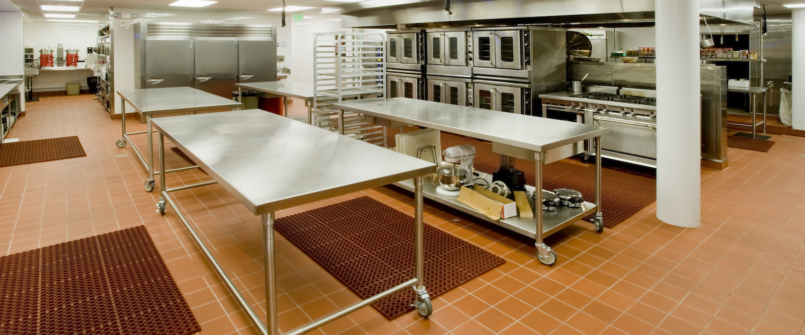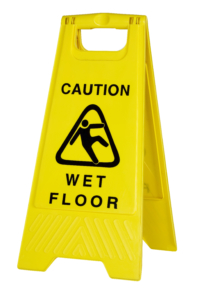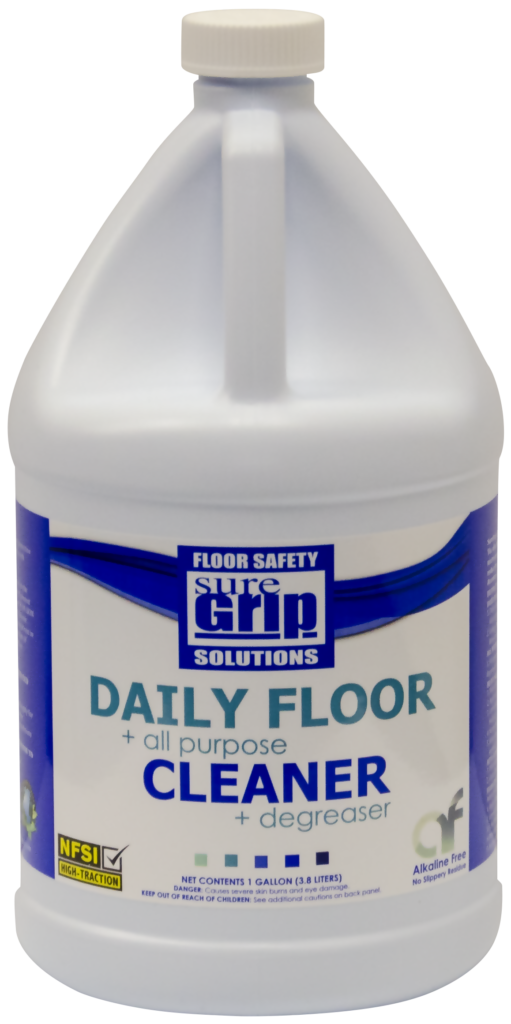
Cleaning Products, Floor Care, Food Service/Processing
Facility Floor Safety: Why It’s Good For Business
Contributed by: Ashley Bryan, Director of Operations, SureGrip Floor Safety Solutions
It pays to be proactive when it comes to maintaining the walking working surfaces in your place of business. A good floor safety program, aimed at preventing and reducing slip and fall accidents, may save your organization money on litigation fees and insurance premiums as well as reduce potential pain and suffering of customers or employees resulting from an accident. Coupled with new OSHA rules on the horizon that will require more rigorous oversight of the safety of floor surfaces, now is the time to make facility floor safety a priority.
The Potential Costs of Slip and Fall Accidents
According to the National Safety Council, approximately 25,000 people a day are victims of slip and fall accidents. Some associated costs include:
- The average cost to defend a slip and fall lawsuit is $50,000 (National Floor Safety Institute)
- The average cost of a slip related injury exceeds $12,000 (Wausau Insurance)
- Falls on the same level have direct costs of $10.62 billion every year (Liberty Mutual Workplace Safety Index)
- The average OSHA fine for fall protection is $1,160
Insurance policies may present a false sense of security for businesses because filing even one claim is likely to result in an increased premium for years to come. According to insurance industry leader, The Hartford, the average payout for a slip and fall injury is $20,000. With an average claim of $33,000, a business could potentially pay out of pocket costs of $13,000, even when a deductible has been met.
Prevention is the Best Cure
There’s an old saying that goes “an ounce of prevention is worth a pound of cure.” In other words, it’s much easier and less expensive to prevent accidents than to “clean them up” after the fact. According to the Canadian Center for Occupational Health and Safety, good housekeeping in your facility is the first and most fundamental level of slip, trip and fall prevention. While these things may seem obvious, it bears mentioning that facilities should:
- Clean all spills immediately
- Mark spills and wet areas
- Mop and sweep debris from floors
- Remove obstacles from walkways and keep them free of clutter
- Secure mats, rugs and carpets that don’t lay flat with tacking or taping
- Cover cables that cross walkways
The Science of Safer Floor Cleaning
Many of the potential costs mentioned above can be avoided with proper floor maintenance techniques. Good, solid, floor cleaning practices will help to achieve safe walking working surfaces throughout your facility and mitigate the risk of slip and fall accidents.
There are four factors that contribute to the effectiveness of cleaning and facility floor safety:
Some cleaners do more harm than good when it comes to floor safety. On greasy floors – such as those found in commercial kitchens – high alkaline cleaners can leave behind a soap residue that becomes slippery when water is introduced. Even if a floor seems safe while dry, an alkaline residue can instantly turn into a slip hazard when wet. On greasy floors, be sure to use an emulsifying degreaser which will lift and suspend contaminates, allowing them to be removed.
The most effective and safest type of chemical for hard surface flooring is a non-alkaline cleaner-degreaser that emulsifies grease and is also free rinsing. SureGrip Daily Cleaner is one example of this. Recently added to Nyco’s floor cleaner line, SureGrip Daily Cleaner is certified by the National Floor Safety Institute (NFSI) as a “High-Traction” product, which means that the product was rigorously tested for wet slip resistance by a third party.
2. Dwell Time
Dwell time refers to the amount of time needed for a cleaning chemical to effectively do its job. When using cleaners that emulsify and remove grease, a longer dwell time is needed to allow the cleaning agent time to break down grease. Extremely dirty floors will require longer dwell times.
3. Agitation
Mopping is a simple form of agitation. The movement of the mop over the floor surface will create a small amount of agitation and will loosen some of the contaminates. Conversely, a deck brush will create 10 times the agitation of mopping and is necessary for effective cleaning in places like commercial kitchens and high traffic areas. The dirtier the floor, the more agitation is needed.
 4. Soil Removal
4. Soil Removal
For small floor areas with little or no oils, mop it up. Large floor areas with oils and grease require a more thorough extraction method. Rinse floors with clean water after cleaning with a hose or a clean mop head and fresh water in your bucket. Use a squeegee when there are floor drains. Be sure to always place a Wet Floor Sign over mopped areas until they are completely dry.
Clean Floors Make Good Business Sense
Businesses would be wise to consider the positive ROI of facility floor safety. Start simple by evaluating the condition of flooring surfaces, what floor cleaning chemicals are used and if they are safe, and whether proper cleaning procedures are in place. Every step taken to improve floor safety today is a step toward preventing a future slip or fall in your facility and the many expenses that come along with it.
For more information on floor safety, visit the National Floor Safety Institute or SureGrip Floor Safety Solutions.

